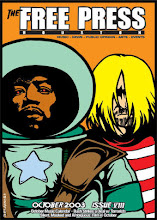American Violet
American Violet tells the true story of a woman falsely accused of a crime who went against a corrupt system and won. But even in victory you are aware of the toll justice takes on all sides in this movie from director Tim Disney (great-nephew of Walt Disney). But American Violet is more than a movie-of-the-week recounting of a travesty of justice and definitely not a Disney studio film (it's distributed by Samuel Goldwyn). As realized by a superb cast the story has the immediacy of something ripped from the headlines.
While the film takes place in a fictional small Texas town the actual event took place in Hearne, Texas. A zealous district attorney targets black citizens and stages SWAT style raids on an apartment complex essentially arresting everybody on trumped up drug charges. If you plea guilty you get off with probation and a record, but if you contest your arrest you face enough hard time to essentially keep a person in prison for most of their life. On the law's side are dishonest informants and the morality of a war on drugs. In the corner of the oppressed are a ACLU lawyer (Tim Blake Nelson) and a reluctant hometown lawyer whose conscious finally gets the best of him (Will Patton).
Nicole Beharie plays the single mother who's faced with the dilemma of accepting an unfair plea bargain or risking her entire future on a court case where the odds are clearly stacked against her. There are a couple of important pivotal points to the story that depending on your acceptance make American Violet work. One chronicles the change that comes over Patton that makes him do the right thing and the other involves the evidence that exonerates Beharie and that propels the litigation angle of the third act.
American Violet keeps its focus on how society will go along with the status quo even when the system is corrupt. The tale might seem fanciful with the white lawyers coming to the rescue of the wronged black woman yet the story actually happened. In another movie justice might be achieved with force and weapons but in American Violet the end result comes through intelligence and dignity.








